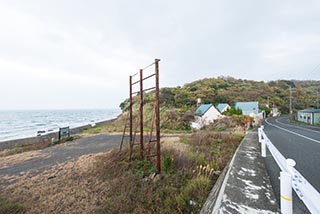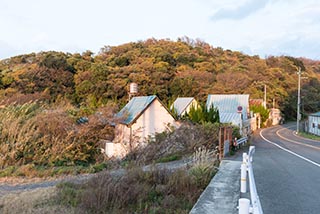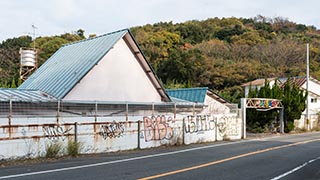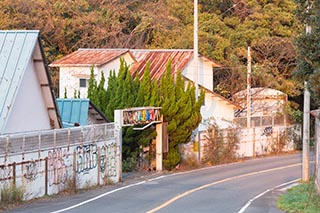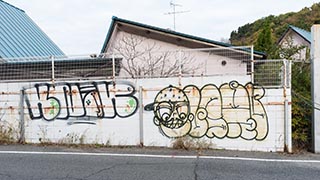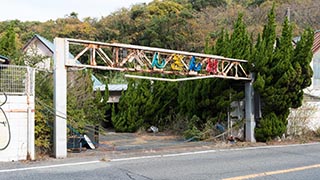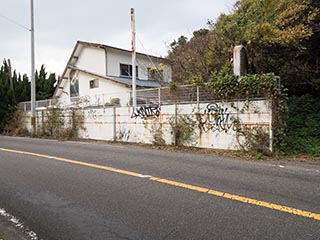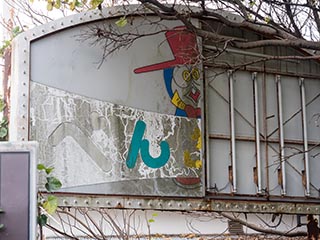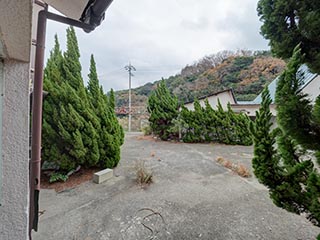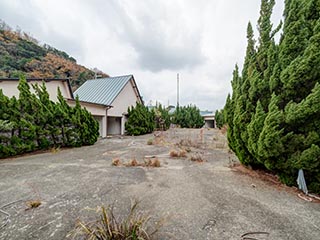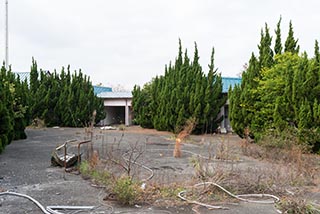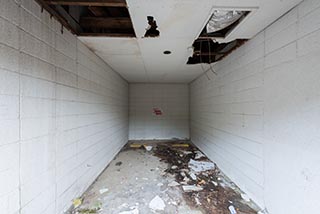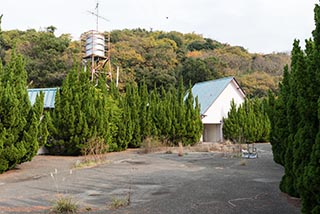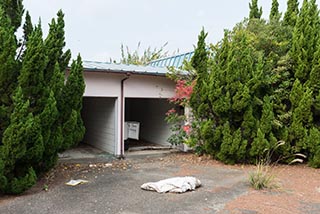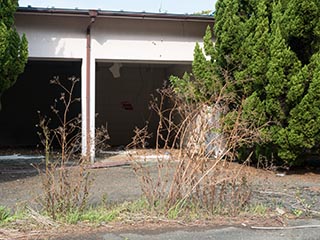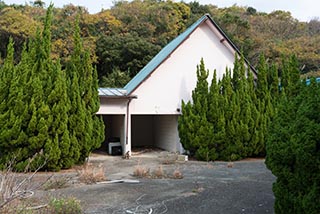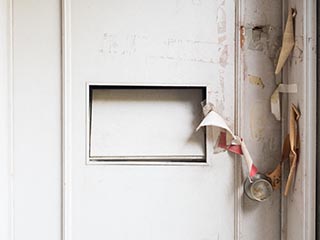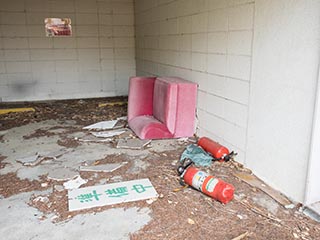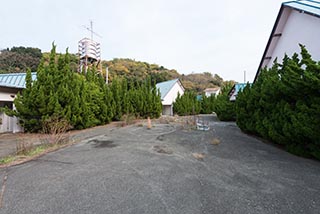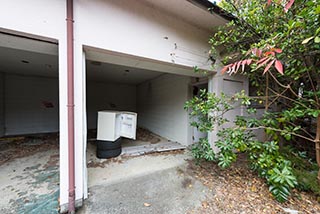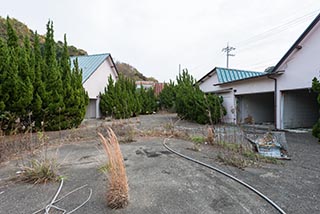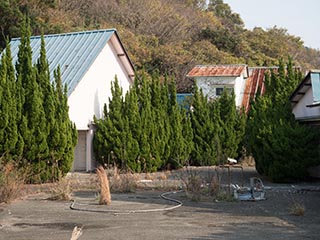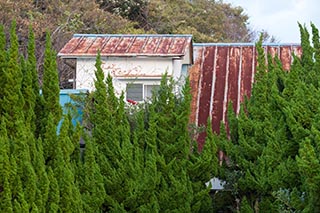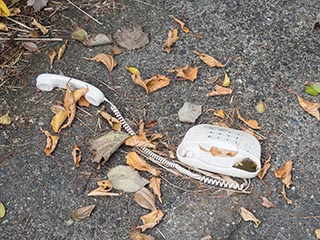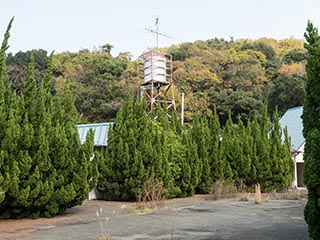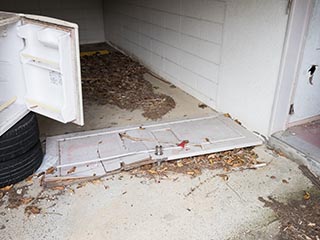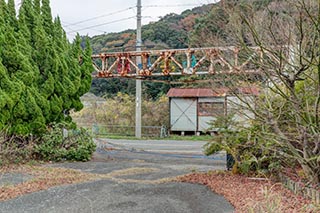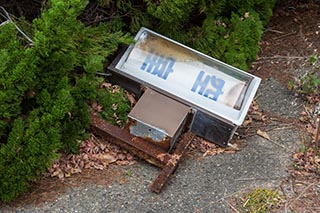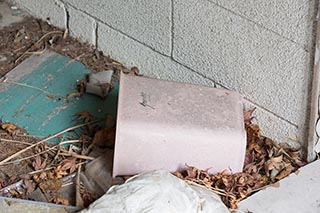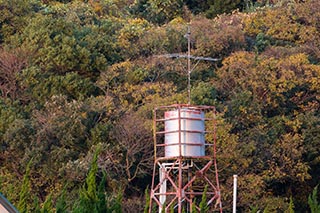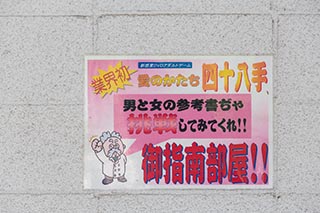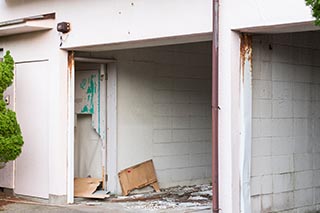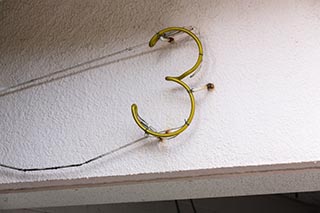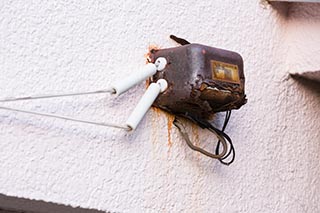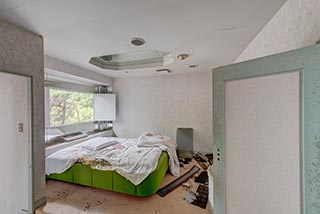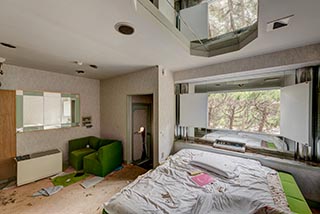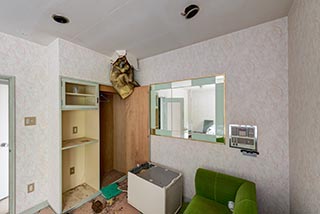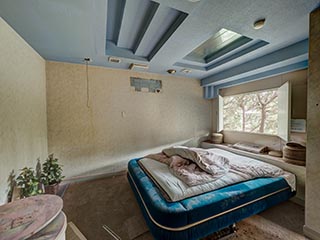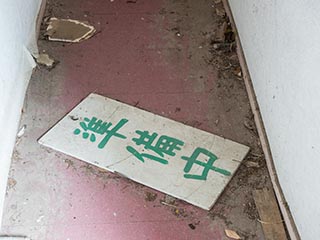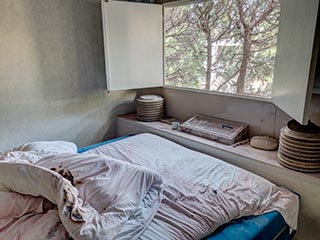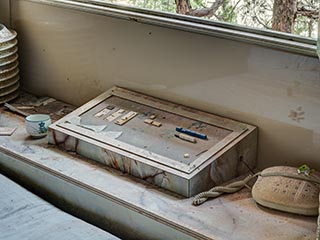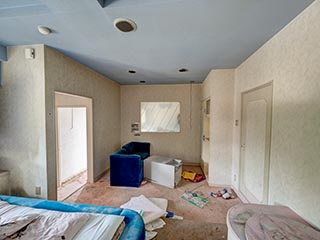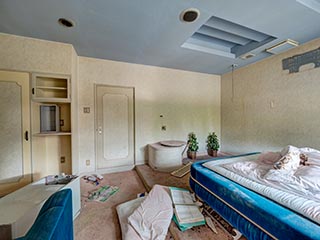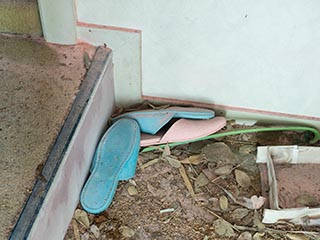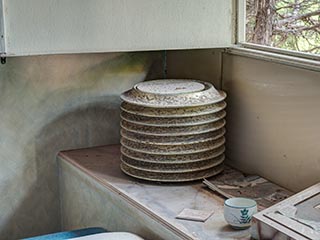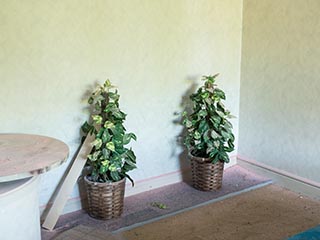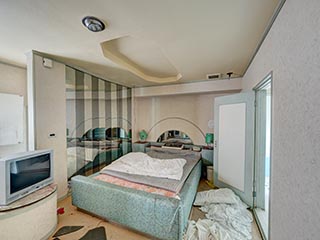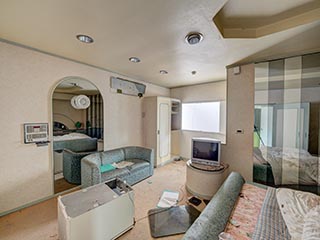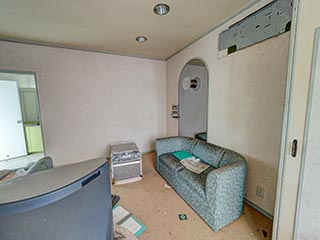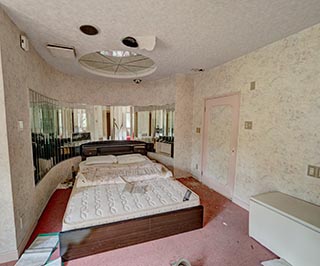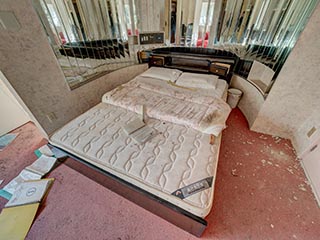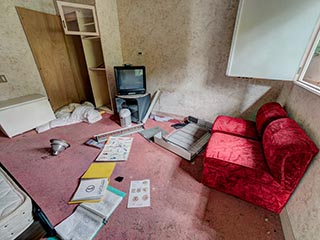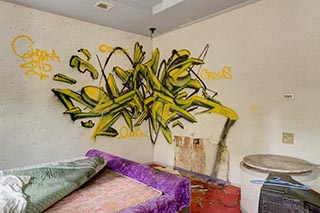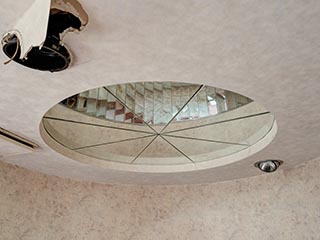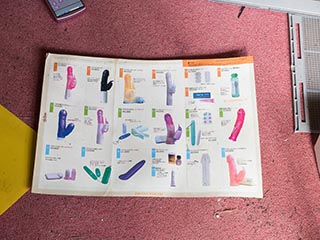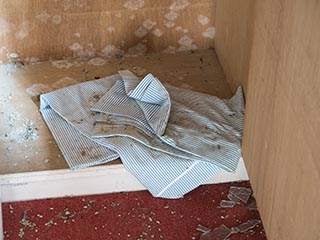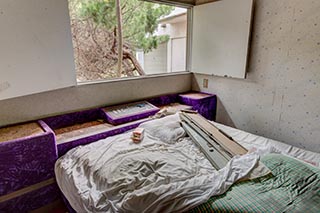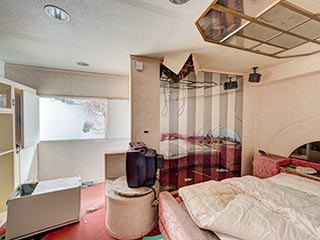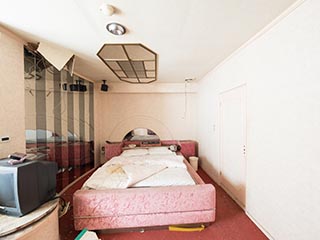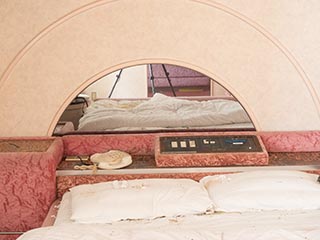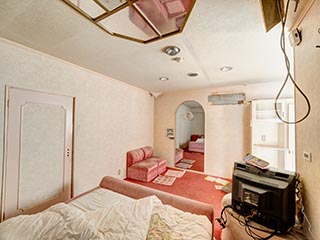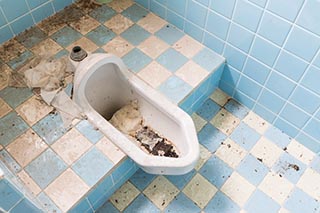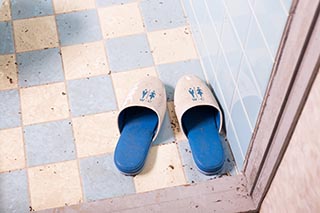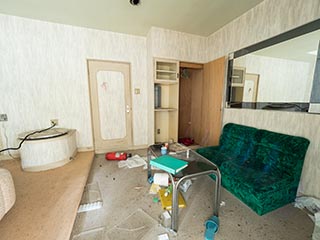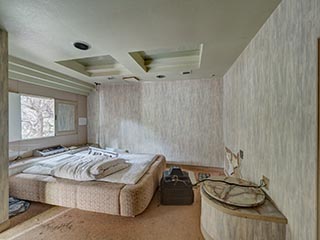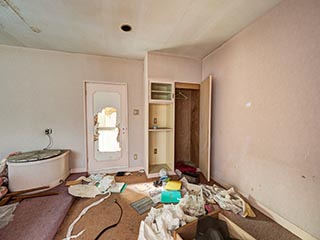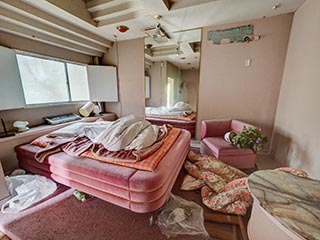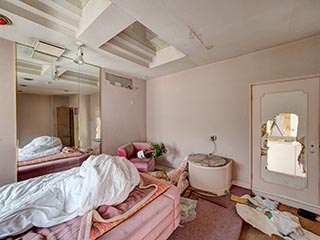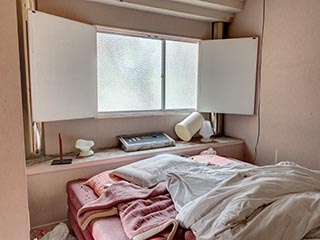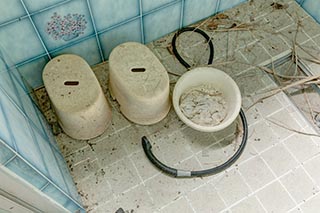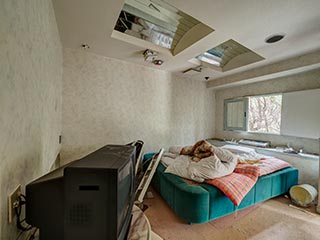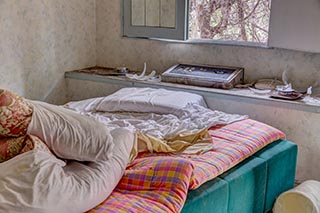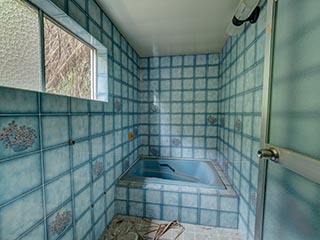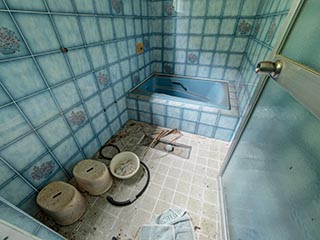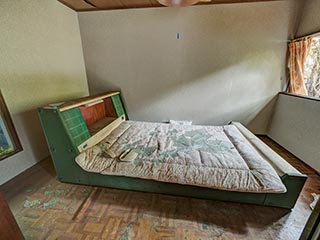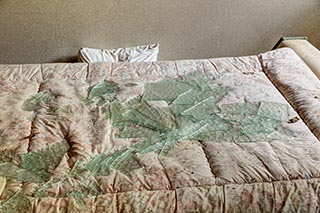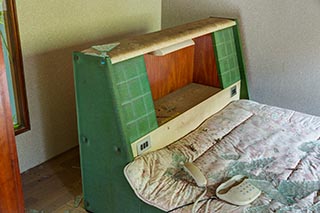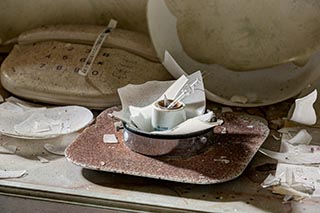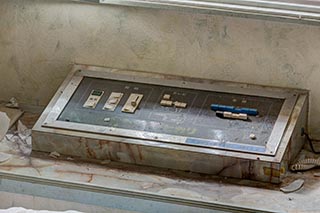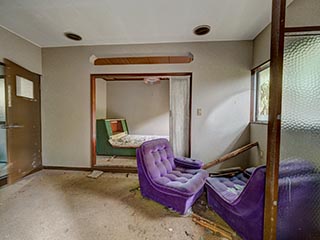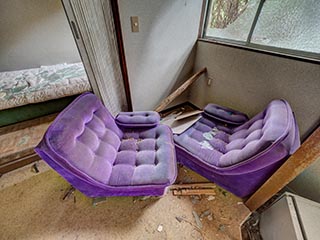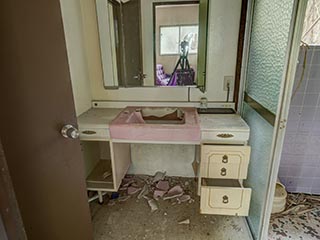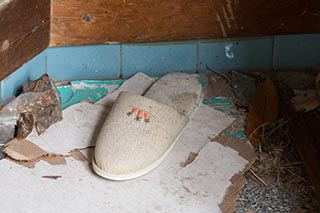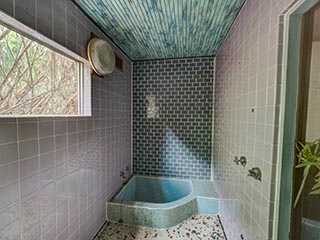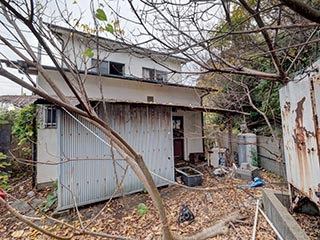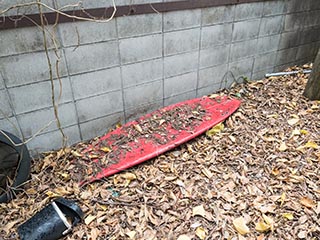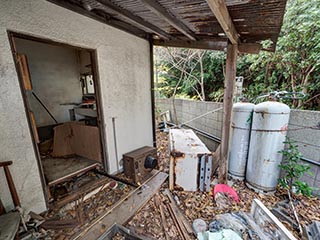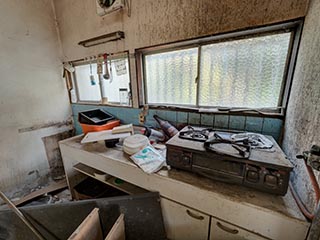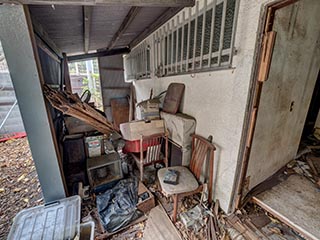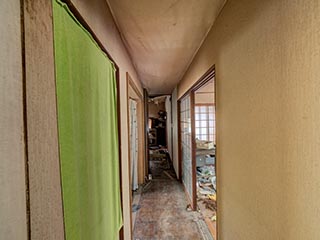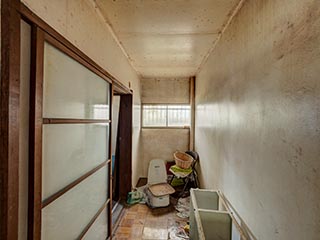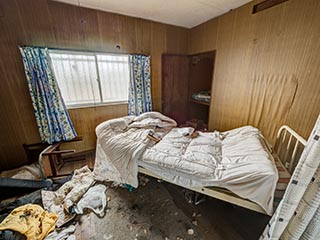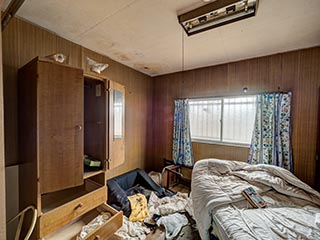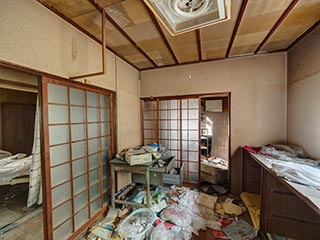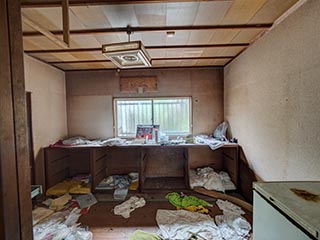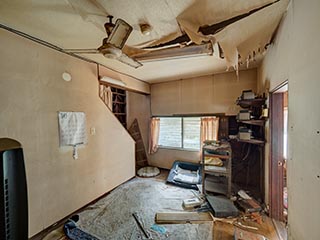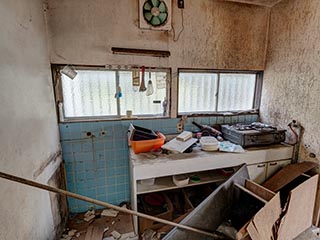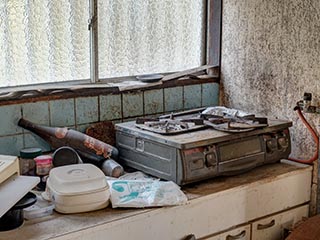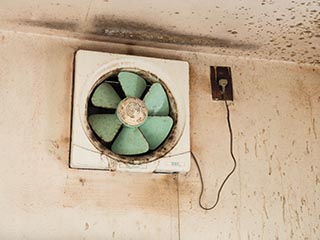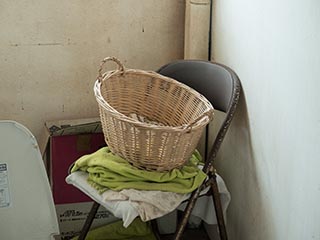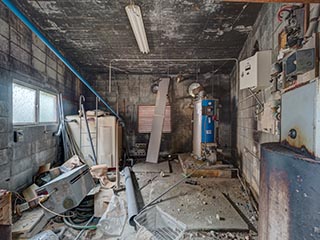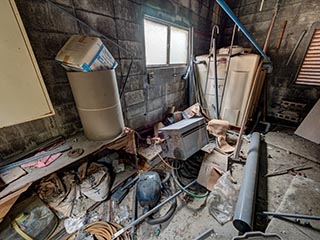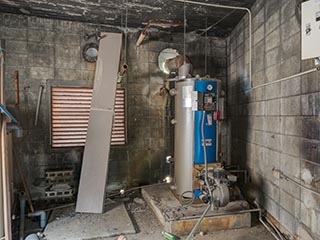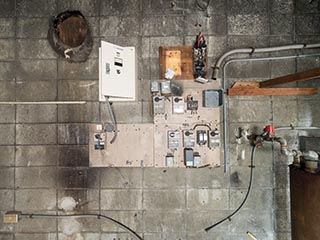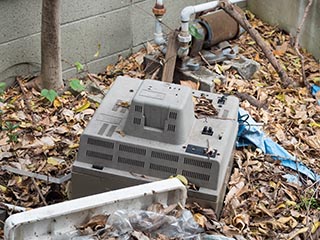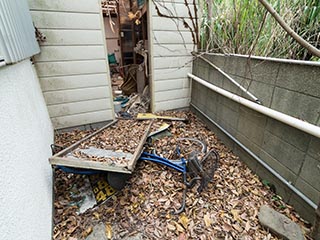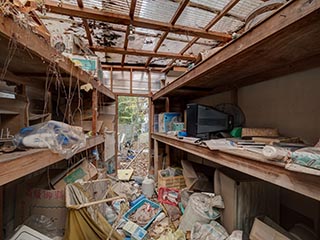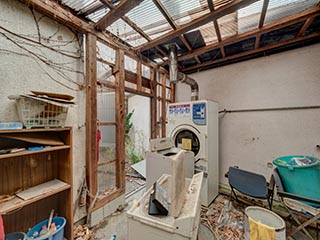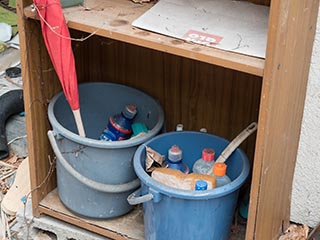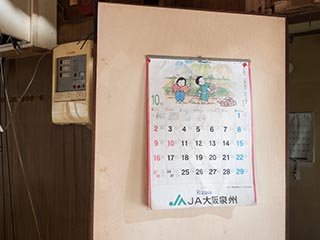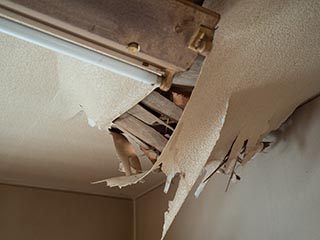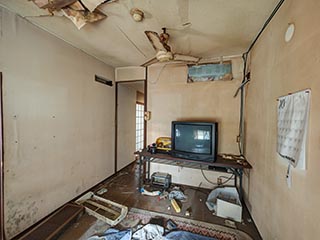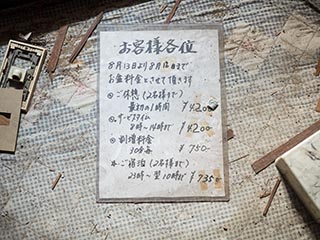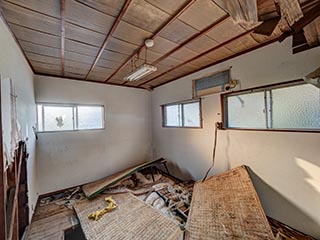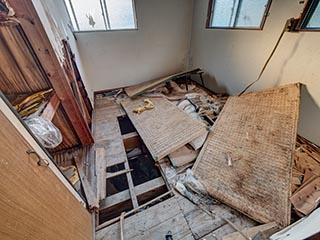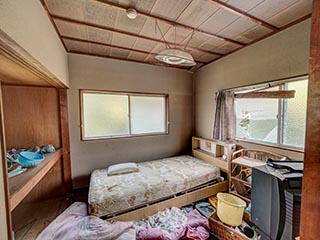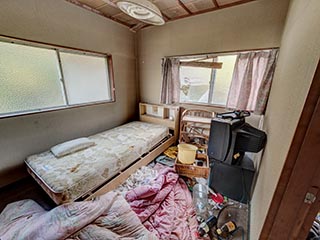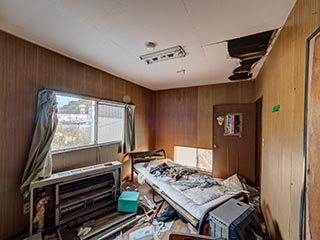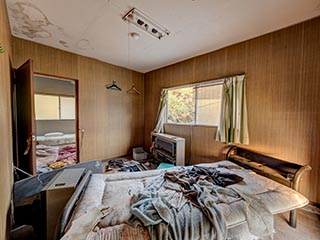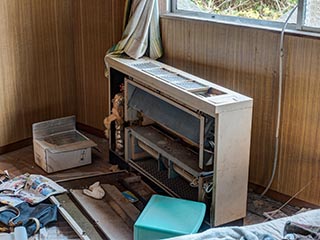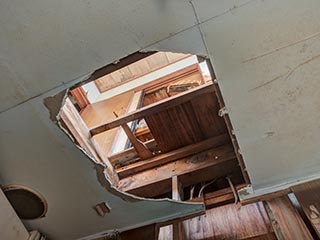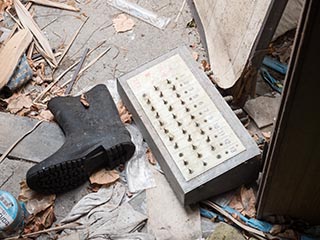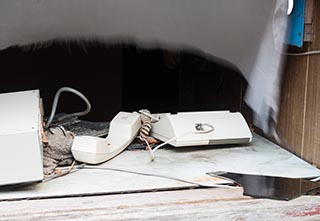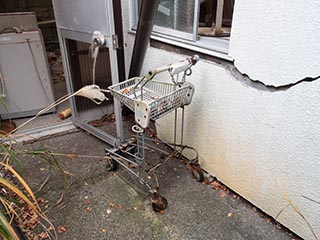The Hotel Penguin Village was a love hotel by the sea in a relatively remote part of Osaka Prefecture. I photographed its ruins on an overcast day in December 2015.
The surrounding area looked like it had seen better days. The rusting frame of a disused billboard stood near the hotel, and there was a small, apparently abandoned shop a short distance up the road. A few small, dilapidated structures across the road from the hotel may or may not have been abandoned. Buildings in rural Japan are sometimes so poorly maintained that they look abandoned even when they're still in use.
A larger love hotel about 100 metres from the Penguin Village remained in business, but it was looking a little run down, and I imagine that it's not thriving.
The Penguin Village consisted of a number of cottages and adjoining carports surrounding a central courtyard. This is perhaps the most popular layout for love hotels in rural areas, where land is relatively cheap.
The carports of love hotels often have doors or curtains to hide the cars and protect the customer's privacy, but many, including the Penguin Village, do not. Apparently they are prohibited in some prefectures. Japan has more than its fair share of pointless legislation.
The cottages at the Penguin Village were typical of what I've seen in other rural love hotels. The room layouts varied somewhat, but they would all have provided the same adequate but unremarkable standard of accommodation. The décor was quiet and conventional as love hotels go, although some of the furniture was upholstered in unusual colours of questionable taste. Most rooms featured ceiling mirrors, but there were no rotating beds or other special equipment. The bathrooms and baths were on the small side. The only oddity was the Japanese style toilets, which are unusual in hotels, especially love hotels. The only other place where I'd seen them was the Hotel Sekitei in Akita Prefecture.
Most of the furniture and equipment had been left behind when the hotel was abandoned. The cottages were still structurally sound, and despite some windows being left open they hadn't yet suffered serious decay. There was some vandalism and graffiti, and the contents of the rooms had been thrown around, but the cottages were generally well preserved and it was easy to imagine what they looked like in their heyday. In the last decade of the 20th Century, the Penguin Village would have been a decent place for wandering lovers to stop for a few hours.
At small rural love hotels, the manager, who is often also the owner, usually lives on the premises. A two storey house near the entrance was apparently home to the manager of the Penguin Village.
The door to the house had been torn off its hinges, and the empty doorway led into the kitchen. As I photographed the kitchen and the first few rooms, I started hearing noises coming from above, which sounded worryingly like somebody moving around upstairs. Mysterious noises in an abandoned house can be unnerving, and I grew increasingly fearful that there really was someone up there. After about 20 minutes my fears got the better of me and I quickly retreated outside.
I wasn't convinced that the sounds were caused by a person, but people do sometimes squat in abandoned buildings, and encountering a deranged and dangerous squatter was unlikely but possible. In any case, I was reluctant to enter the house again, so I decided to photograph the boiler room, which was in a separate building nearby, while I considered the situation.
I gradually convinced myself that the sounds were probably just branches moving against the side of the house, or rats, or perhaps the building settling, and went back for another look. I was still a little apprehensive, so I started by photographing some storage and laundry rooms in a lightly built extension at the side of the house. As I worked up my courage I made my way deeper into the building, and finally climbed the stairs to explore the upper storey.
I searched the rooms, and satisfied myself that nobody could be hiding there. In all likelihood there never was anyone upstairs, but a more unsettling possibility is that there really was someone there, and he (or perhaps she) slipped out while I was in the boiler room. Looking at my photographs later on, I noticed a large hole in one of the upstairs ceilings, and thought of an even more unsettling possibility.
The house was in rather worse shape than the guest rooms. A few of the ceilings were starting to collapse, and someone had broken a hole in the floor of one of the upstairs rooms. As is common in Japan, most of the furniture, and a lot of personal effects, had been abandoned along with the building. I noticed two calendars on the walls, which were open to October 2005, suggesting that the place was last occupied a decade before I made my visit.
